
The USS Alabama is seen here in March 1943 while underway in the Atlantic. This photograph shows the wide range that her “Big Guns” could cover. Turret two is rotated almost completely aft. Each turret could rotate up to 270 degrees.
Seven
EARNING NINE
BATTLE STARS
The USS Alabama (BB-60) earned nine battle stars during World War II. These honors did not start when the “Mighty A” entered into her first battle; the effort to earn these wartime honors began when her crew first took her to open waters for sea trials.
Alabama served in both the Atlantic and Pacific theaters. She was present when convoys needed to be protected early in the war and when offensive task forces needed protection during the war and towards its end. Her crew was present when she led the Allied fleet into Tokyo Bay and when servicemen simply needed a ride home to the states.
Alabama’s crew earned battle stars for their service in 1943, 1944, and 1945. The first was for action in the Gilbert Islands from November 19 to December 8, 1943. The next six battle stars came in 1944 for action in the Marshall Island operations, the Hollandia operations, the Marianas operations, the western Caroline Islands operations, and the Leyte operation. All of those operations pushed the Japanese forces off occupied islands.
In 1945, Alabama added two more battle stars for her service during operations leading to the eventual assaults on mainland Japan. These were the Okinawa Gunto operations and the Third Pacific Fleet operations against Japan.
Alabama is credited with shooting down 22 enemy aircraft, providing cover and bombardments for key invasions during the war, and for sounding the alarm to an entire task force that an enemy attack was nearing. This alert came during a critical point in the war and was due to the fact that the Alabama’s crew took it upon themselves to install the newest radar system while underway at sea.

The USS Alabama is seen here in March 1943 while underway in the Atlantic. This photograph shows the wide range that her “Big Guns” could cover. Turret two is rotated almost completely aft. Each turret could rotate up to 270 degrees.

Alabama is seen here on August 20, 1943, as she steams towards Norfolk, Virginia, shortly after being refit and after serving in the Atlantic with the British Home Fleet.

Alabama is seen here on her shakedown cruise prior to heading towards the North Atlantic. It was during her early shakedown cruise that Alabama ran aground on an unmarked sandbar between the Chesapeake Bay and Baltimore. She is painted in her Measure 12 (modified) camouflage paint scheme. This photograph was taken in Casco Bay, Maine, in December 1942.
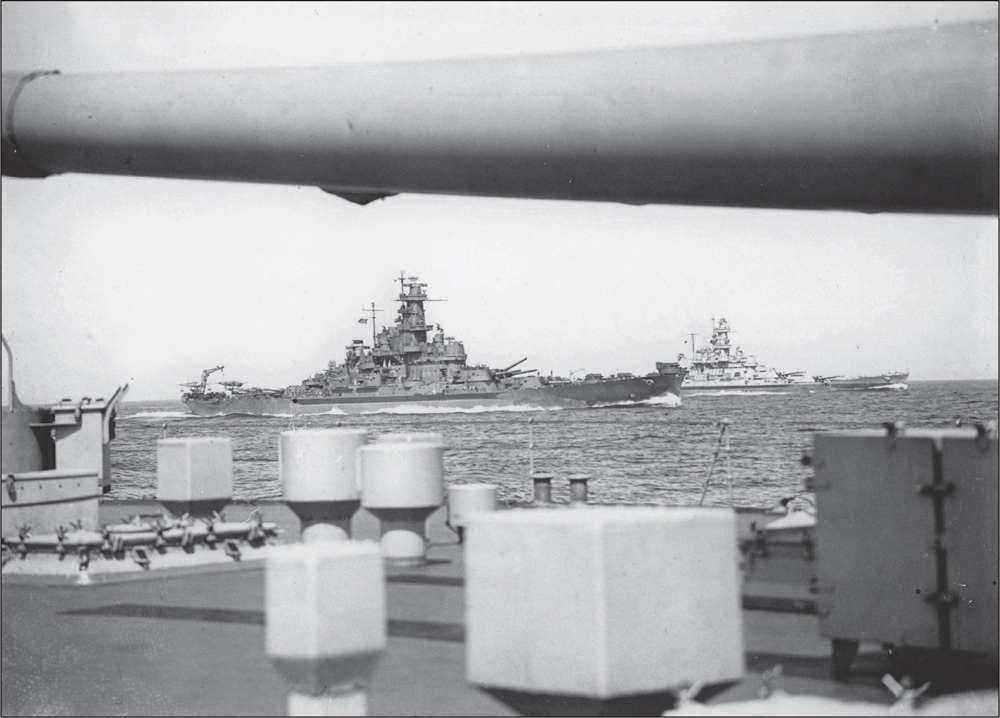
In the foreground of this photograph is the USS South Dakota (BB-57), with the Alabama alongside. The photograph was taken from the deck of HMS King George V when Alabama was serving in the Atlantic with the British Home Fleet in 1943.

The Alabama’s superstructure is seen here in December 1942. Mounted atop the superstructure is the fire control radar for her “Big Guns.” The second radar, below the flags to the right, is the fire control radar for the secondary battery. The smaller loop-shaped piece of equipment to the lower left is the radio direction finder.

Below, in the North Atlantic, members of Alabama’s crew spend a few minutes with Royal Marines. The British moved much of their naval forces to the Mediterranean theater prior to the invasion of Sicily. Alabama and South Dakota were assigned to the Royal Navy Home Fleet to help protect northern convoy routes.
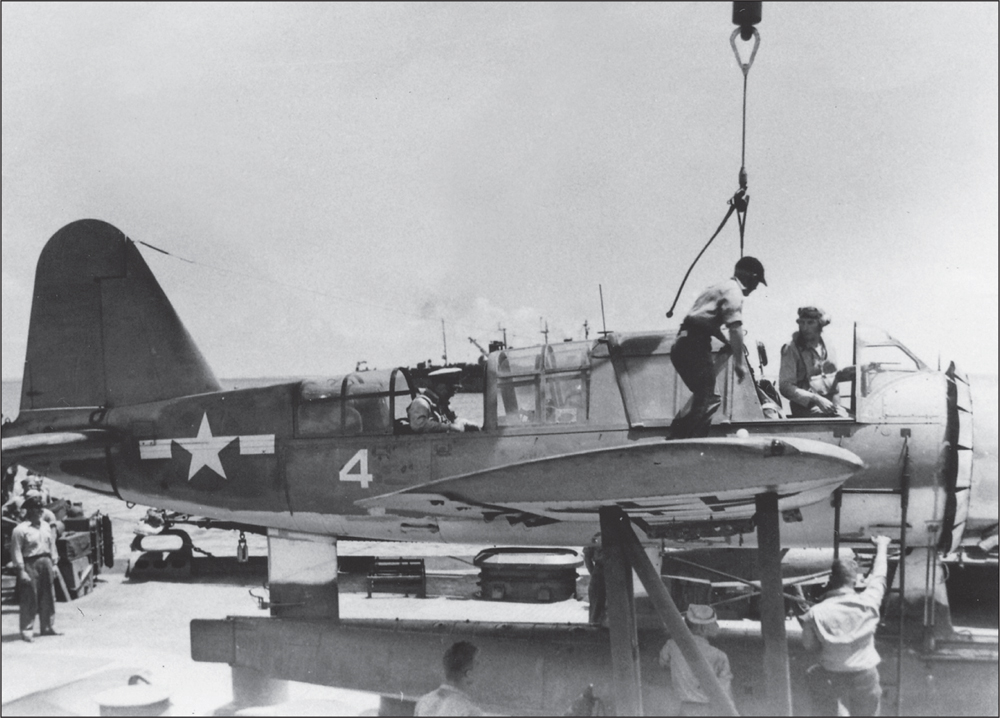
Alabama was home to three OS2U aircraft, called Kingfishers. The planes’ main role was to observe the accuracy of shots fired from Alabama’s 16-inch main battery. The planes also served in several other roles, such as being a taxi and for search and rescue missions.

Alabama’s Kingfisher aircraft were launched off catapults located on both the port and starboard side of Alabama’s aft deck. This launch took place on the starboard catapult. The planes would return to Alabama by landing at sea. Alabama’s crane would then lift them back onto the deck.
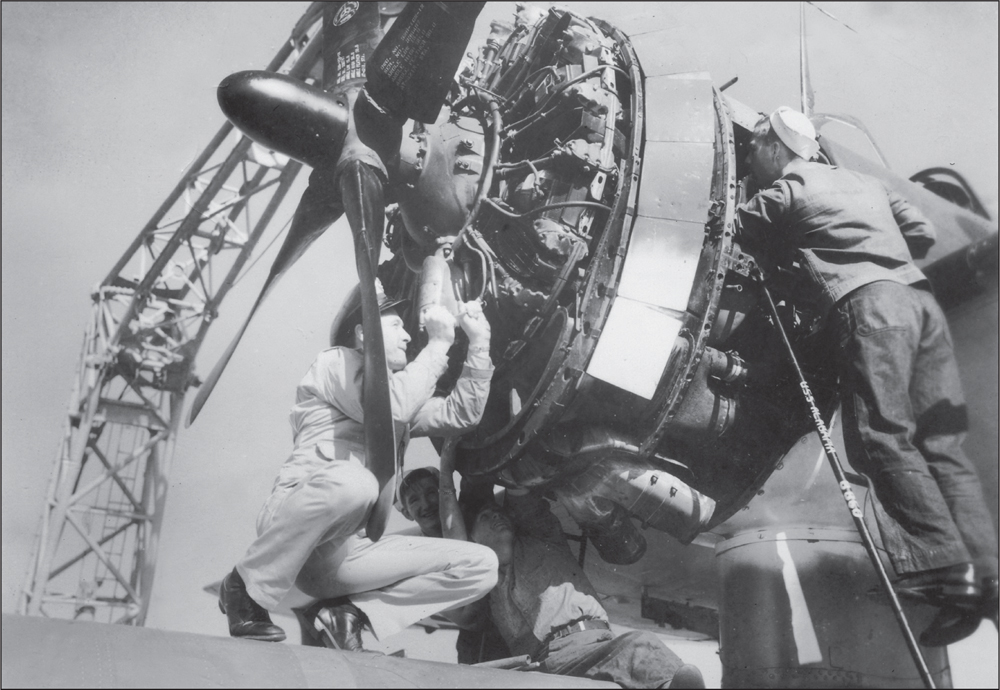
The Alabama did not have a hangar for her aircraft, so they were exposed to the elements unless covered by tarps in extreme conditions. This meant that inspections and routine maintenance of the planes was done on a constant basis. The crane used to lift and move the planes is in the background.

This photograph shows one of the targets in the Marshall Islands being bombarded by Alabama’s 16-inch “Big Guns.” The caption from Alabama’s war diary simply says, “The Target Burns.” The Kingfisher pilots spotted the targets and communicated accuracy back to the Alabama. An airstrip on the island is in the foreground.
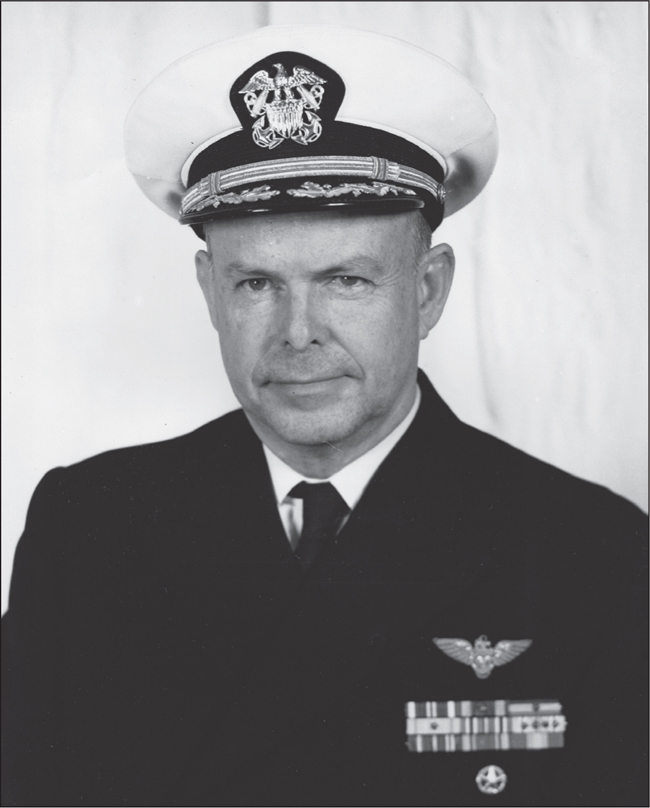
Raphael Semmes Jr. was the great-grandson of Capt. Raphael Semmes, who commanded CSS Alabama during the Civil War. Semmes Jr., seen here in 1960, served on the USS Alabama (BB-60) as a lieutenant from November 1942 to July 1943, during Alabama’s North Atlantic convoy escort duties with the British Home Fleet and during the Murmansk Run. He was the senior aviator and the head of the V (Aviation) Division.

While this photograph appears to show Alabama taking on nearby enemy fire, the plumes on the horizon are actually practice shots fired from another battleship. In order to keep in training, the crews of the “Big Guns” on each battleship would target behind another ship for practice. Pilots also used the larger ships for practice bombing and torpedo runs.

Crew members aboard Alabama seem happy about the Allied air cover overhead. This undated photograph from the USS Alabama archives was taken while she was serving in the Pacific. Note that none of the sailors are wearing helmets, indicating that there was no immediate enemy threat.
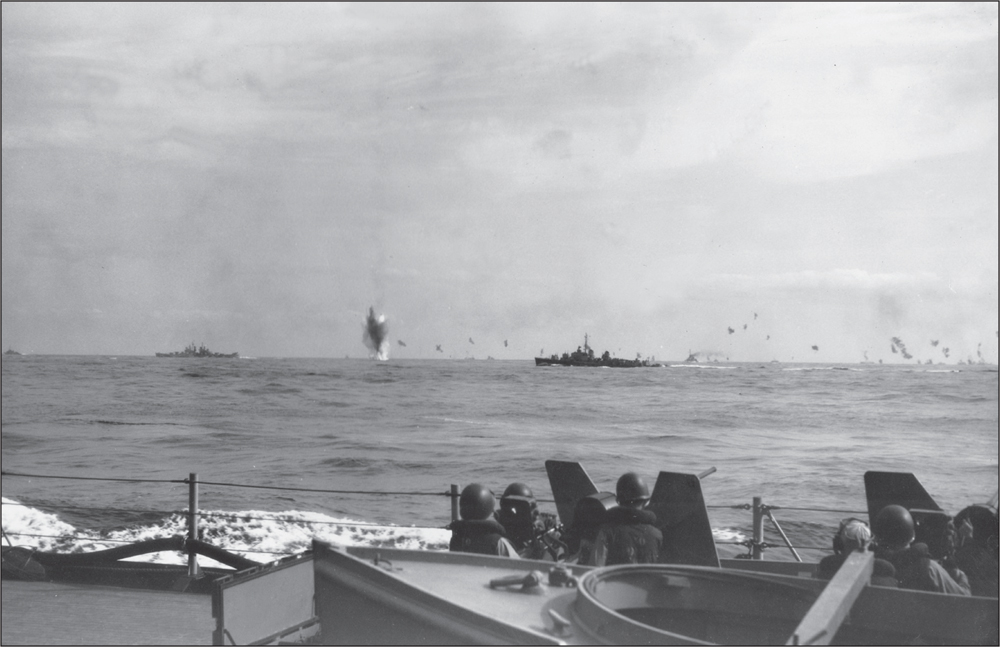
This photograph, taken from Alabama, shows a large splash caused by a Japanese plane crashing into the Pacific Ocean after it was shot down. Two of Alabama’s 20-millimeter single antiaircraft machine guns are seen in action.
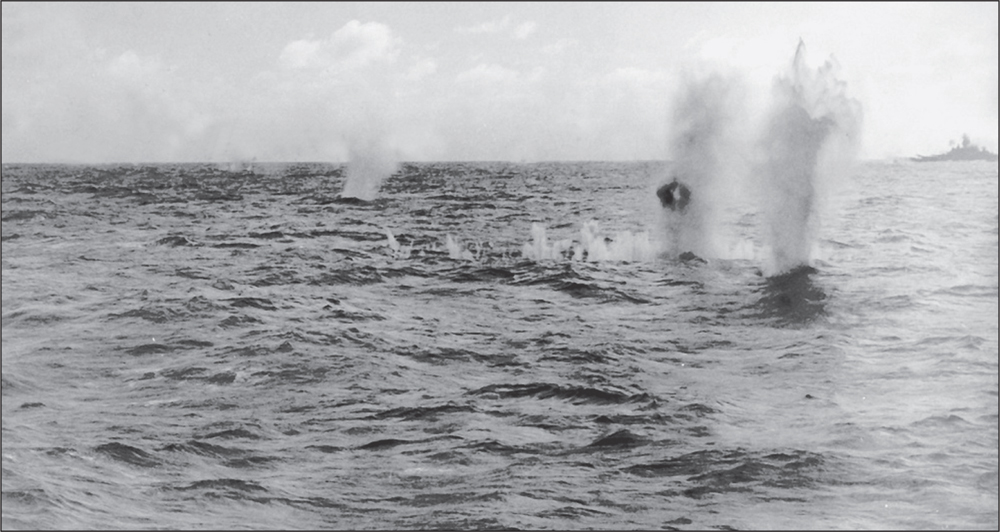
This photograph was taken from the deck of the USS Essex (CV-9) on October 14, 1944. It shows splashes on the water’s surface caused by the impact of a torpedo just released from a Japanese torpedo bomber. Other splashes are from gunners shooting at the bomber and the torpedo. Alabama is seen on the horizon to the right.

Air protection is flying above Alabama in this photograph. While serving in the Pacific, Alabama and her crew were most often part of carrier groups or task forces, which combined multiple types of ships of all sizes. The Alabama war diary refers to air support as being “Guardian Angels.”

These two photographs of the USS Enterprise were taken during the assault in Okinawa on March 20, 1945. They both show the aftermath just seconds after a Japanese plane crashed into her. Both photographs show Enterprise as a smoke billow rises above her. The photograph below was taken by one of the combat photographers aboard Alabama.
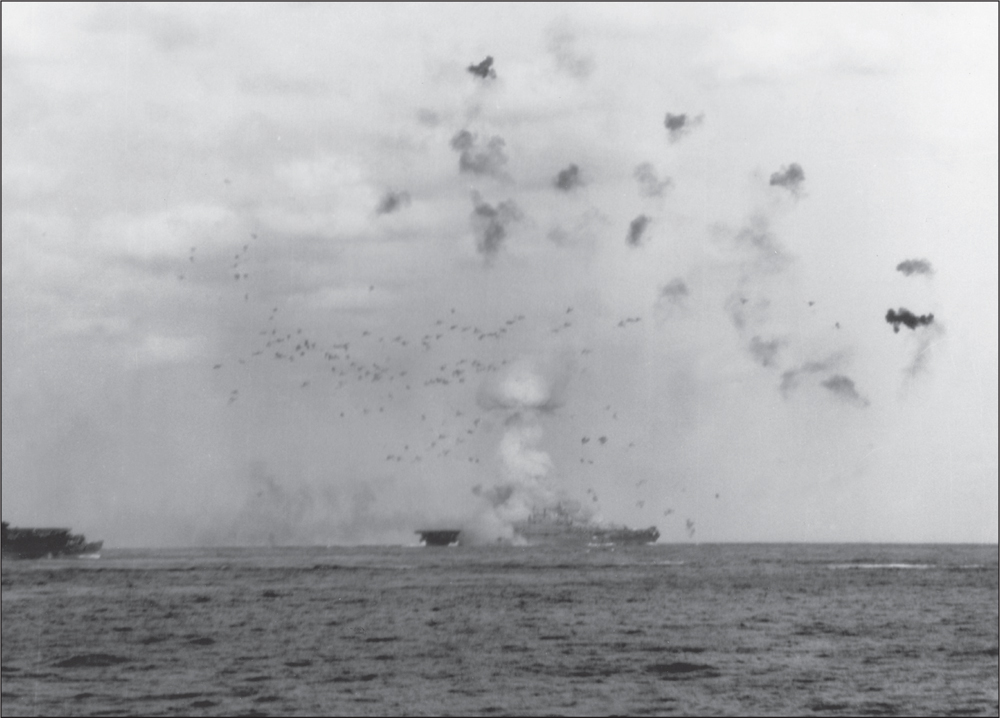
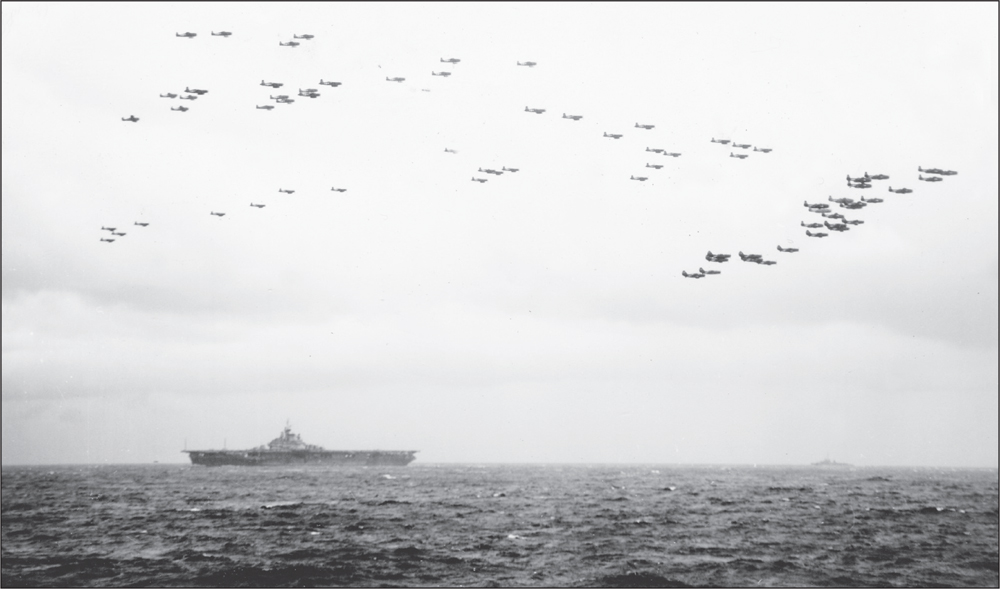
American planes are seen here leaving on a mission. The USS Alabama patrolled areas around the Marianas and the South Pacific in 1944 and 1945 in order to protect the American landing forces and carriers. On October 6, 1944, Alabama sailed with Task Force 38 to aid in the liberation of the Philippines and then the assaults on Okinawa.

Alabama supported aircraft carriers during air raids on the islands of Tinian, Saipan, and Guam in June 1944. This photograph was taken as a splash from a Japanese bomb lands—a near miss just abreast of Alabama’s turret two.

This photograph was taken in the Pacific during assaults on several Japanese-held islands, including the assault against Okinawa. The main battery of 16-inch guns are silent as the antiaircraft guns do their jobs.

This photograph was taken in May 1945 while Alabama was serving during assaults on Okinawa. It shows Japanese bombers as they attempt suicide attacks against carriers in Task Force 58.

This photograph was taken aboard the USS South Dakota (BB-57). It shows battleships USS Indiana (BB-58), USS Massachusetts (BB-59), and USS Alabama (BB-60) forming a line as they steamed through the Pacific towards the war’s end in 1945.

This photograph was taken in Seattle, Washington, on Victory Over Japan Day. The photograph is dated August 14, 1945, as word trickled back to the states that Japan was surrendering. The photograph, originally from the archives of the Museum of History and Industry, is now in the archives of the USS Alabama. The original caption identifies the sailor on the light post as USS Alabama crewman Orlando F. Scarpelli.

These two photographs show USS Alabama at the end of the war, in September 1945. She is seen above leaving Pearl Harbor on September 10, as she steams to the West Coast. She is seen below nearing San Francisco. Her decks are packed with her regular crew as well as the numerous servicemen who hitched a ride home.


Tugboats were a vital part of any wartime harbor, as many ships were too large to safely navigate in shallow waters. Experienced tug crews familiar with local waters could gently guide and nudge ships of all sizes. After Alabama arrived home, she spent several weeks ferrying troops to ports along the West Coast.

As the USS Alabama arrived home, her crew was welcomed back by an appreciative nation. This photograph was taken during a ship’s dance for the crew of Alabama at the end of the war, at the Lakewood Country Club in Los Angeles.

Alabama is nudged into port by a tugboat at Pier 90 in the Puget Sound Naval Shipyard in September 1946. Moored behind her is the carrier USS Bunker Hill (CV-17). The superstructure of another battleship can be seen above the storage and pier buildings to the left.

This photograph was taken from Telegraph Hill in San Francisco after the war’s end. Three of the four South Dakota–class battleships wait to be decommissioned, as their missions have ended. They are, from left to right, USS Indiana (BB-58), USS Massachusetts (BB-59), and USS Alabama (BB-60).